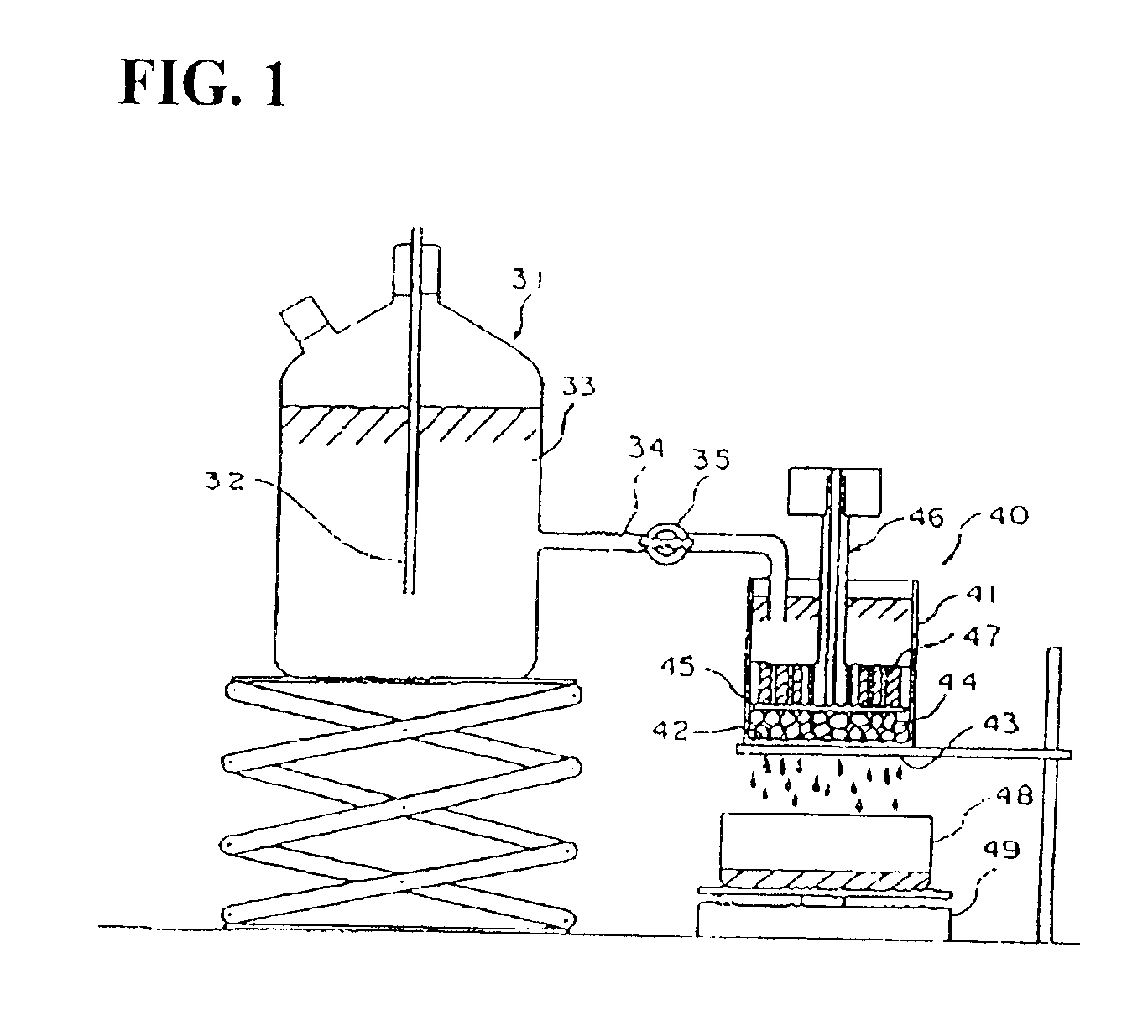Production process for water-absorbent resin
a technology of water-absorbing resin and production process, which is applied in the preparation of carboxylic compounds, organic chemistry, chemistry apparatus and processes, etc., can solve the problems of affecting the water absorption properties and the need for reducing the amount of this water-extractable component, and achieve excellent water absorption. , the effect of excellent water absorption
- Summary
- Abstract
- Description
- Claims
- Application Information
AI Technical Summary
Benefits of technology
Problems solved by technology
Method used
Image
Examples
production example 1
[0073]A reaction gas, as obtained by gas phase oxidation of propylene, was collected into water in an absorption column to obtain an aqueous acrylic acid solution. Next, this aqueous acrylic acid solution was supplied into a solvent-separating column to distil off water and low boiling point impurities such as acetic acid with an azeotropic solvent, thus obtaining crude acrylic acid which had a protoanemonin content of 250 ppm and a furfural content of 260 ppm.
[0074]This crude acrylic acid was supplied into the column bottom of a high boiling point impurities-separating column having fifty dual-flow perforated plates, and then distilled in a reflux ratio of 1 to remove protoanemonin together with high boiling point impurities such as maleic acid and a dimer of acrylic acid (acrylic acid dimer). As a result, furfural-containing acrylic acid having a protoanemonin content of 1 ppm and a furfural content of 240 ppm was obtained from the column top.
[0075]Next, to this acrylic acid, hydr...
production example 2
[0079]Superpurified acrylic acid (2) of which the furfural content had been diminished to 1 ppm (protoanemonin content=3 ppm) was obtained in the same way as of Production Example 1 except that the number of the dual-flow perforated plates and the reflux ratio in the high boiling point impurities-separating column were changed to 40 and 1.5 respectively.
production example 3
[0080]Superpurified acrylic acid (3) of which the furfural content had been diminished to 1 ppm (protoanemonin content=9 ppm) was obtained in the same way as of Production Example 1 except that the number of the dual-flow perforated plates and the reflux ratio in the high boiling point impurities-separating column were changed to 40 and 1 respectively.
COMPARATIVE PRODUCTION EXAMPLE 1
[0081]Purified acrylic acid (4) of which the furfural content had been diminished to 1 ppm (protoanemonin content=30 ppm) was obtained in the same way as of Production Example 1 except that the number of the dual-flow perforated plates and the reflux ratio in the high boiling point impurities-separating column were changed to 20 and 2 respectively.
COMPARATIVE PRODUCTION EXAMPLE 2
[0082]Purified acrylic acid (5) of which the furfural content had been diminished to 1 ppm (protoanemonin content=13 ppm) was obtained in the same way as of Production Example 1 except that the number of the dual-flow perforated ...
PUM
| Property | Measurement | Unit |
|---|---|---|
| Temperature | aaaaa | aaaaa |
| Fraction | aaaaa | aaaaa |
| Fraction | aaaaa | aaaaa |
Abstract
Description
Claims
Application Information
 Login to View More
Login to View More - R&D
- Intellectual Property
- Life Sciences
- Materials
- Tech Scout
- Unparalleled Data Quality
- Higher Quality Content
- 60% Fewer Hallucinations
Browse by: Latest US Patents, China's latest patents, Technical Efficacy Thesaurus, Application Domain, Technology Topic, Popular Technical Reports.
© 2025 PatSnap. All rights reserved.Legal|Privacy policy|Modern Slavery Act Transparency Statement|Sitemap|About US| Contact US: help@patsnap.com



